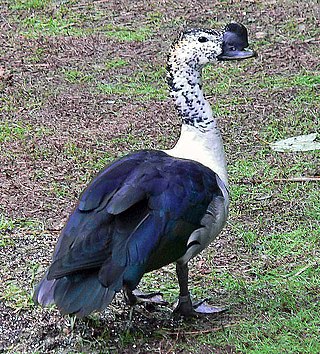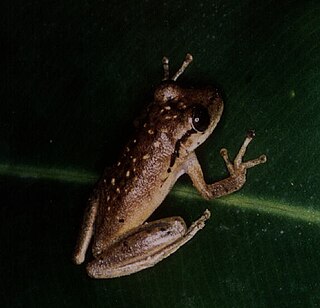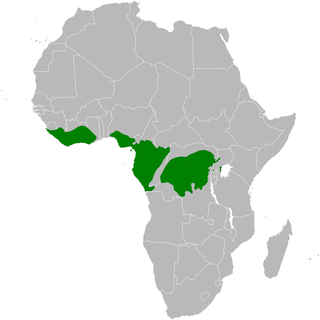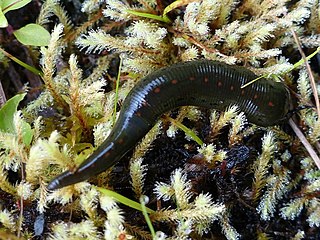
Sarkidiornis is a genus within the family Anatidae. Sarkidiornis is sometimes considered a monotypic genus with its sole member the knob-billed duck, a cosmopolitan species. Most taxonomic authorities, however, split the species into two:

Scinax is a genus of frogs in the family Hylidae found in eastern and southern Mexico to Argentina and Uruguay, Trinidad and Tobago, and Saint Lucia. These are small to moderate-sized tree frogs, drably colored. Duellman and Wiens resurrected this genus in 1992. The name originates from the Greek word skinos, meaning quick or nimble.

Pseudacris is a genus of frogs in the family Hylidae found in North America ranging from the Pacific coastline to the Atlantic.

Scolopendridae is a family of large centipedes.
The Ethiopian long-eared bat or Ethiopian big-eared bat is a species of long-eared bat in the family Vespertilionidae.

The icterine greenbul is a species of songbird in the bulbul family, Pycnonotidae. It is found in western and central Africa.

The genus Hypsugo contains many bats referred to as pipistrelles or pipistrelle bats. They belong to the family Vespertilionidae or vesper bats. They are primarily found throughout Asia, the Middle East, Mediterranean Europe, and North Africa, with a single (debated) species in Sub-Saharan Africa.

Psammobates is a genus of tortoise erected by Leopold Fitzinger in 1835. This genus contains three species, all of which are indigenous to southern Africa.
Episoriculus is a genus of shrew in the red-toothed shrew subfamily. Its common is brown-toothed shrew. It has been described as a subgenus to Soriculus in the past. The genus occurs at a number of locations in Asia, including Nepal and China.

Cotalpa is a genus of beetle in the family Scarabaeidae. All six species within the genus are found in the Nearctic realm.
Oenothera filipes, the slenderstalk beeblossom, is a flowering plant in the genus Oenothera. It is a perennial dicot. It is native to parts of the southeastern United States as well as Illinois and Indiana. It was previously categorized in the genus Gaura.

Macrobdella is a genus of leeches native to freshwater ecosystems of North America, especially Canada, Mexico, and the United States. The genus is commonly referred to as North American medicinal leeches.

Mniaceae is a moss family in the order Bryales.

Leucolepis acanthoneura is a species of moss in the family Mniaceae. It is known as leucolepis umbrella moss or Menzies' tree moss. It is endemic to the Pacific Coast in Canada and the United States.

Notiosoricini, whose members are known as the North American gray shrews, is a tribe of shrews in the family Soricidae, including the genera Megasorex and Notiosorex. They are found across the southwestern United States and most of Mexico.

The Oriental serotine is a species of bat in the family Vespertilionidae. It is widespread and found throughout Asia.
The Alashanian pipistrelle is a species of bat in the family Vespertilionidae. It is found in China, South Korea, Mongolia, Japan, and Russia.
Acanthogeophilus spiniger is a species of soil centipede in the family Geophilidae found in Northwest Africa. The original description of this species is based on a male specimen measuring 27 mm in length with 71 pairs of legs. It was first assigned to the genus Geophilus, but was moved to Acanthogeophilus in 1999 by Foddai and Minelli. Like other species in its genus, it is characterized by incomplete chitin lines, complete coxopleural sutures, stout legs, and a claw-like pretarsus.
Cazuza's saki is a species of saki monkey, a type of New World monkey. It is endemic to northwestern Brazil.
Ward's long-eared bat is a species of vesper bat in the family Vespertilionidae. It is found in mountainous regions of South Asia and adjoining regions.













